What’s the secret to building a successful media company, one that survives over the long term?
It isn’t conversion; it’s retention.
The more you know about your audience, the easier it is to retain them. As we saw in our previous post, each of the 13 different publishing business models depends on retention as an essential component. The content that drives conversion is not the same content that drives retention.
When we define media organizations, we’re ultimately focused on those with a digital presence.
Here are some examples of media organizations:
- News Media: Entities dedicated to the timely reporting of events and issues across a broad spectrum of topics.
- Trade Publications: Magazines and websites aimed at professionals in specific industries, offering news, updates, and insights pertinent to their trade.
- Niche Media: Platforms catering to specialized interests or audiences, offering content tailored to specific hobbies, professions, or demographic groups.
- Sports Media: Outlets focused on sports news, commentary, and analysis, covering everything from local teams to international competitions.
- Broadcast Media: Includes television and radio networks and stations that deliver content ranging from news and entertainment to educational programming.
Today, we’ll take a look at several specific examples.
Media Company #1: Insider
Insider is a financial and business news website that’s owned by the German conglomerate Axel Springer. Insider generates revenue via affiliate marketing, display, video, editorial advertising, and subscription plans for readers interested in the business-oriented products they offer.
- 375 million monthly audience footprint
- 229 million readers across their social media profiles
- Goal-oriented people from every age group who are driven and inspired to act
- The average age of Insider readers is mid-to-high 30s, as compared to the mid-40s and up
- Readers love both narrative journalism and visual and data journalism (photography, video, and data analysis)
- More than half of Insider Readership is on mobile, via tablets and smartphones
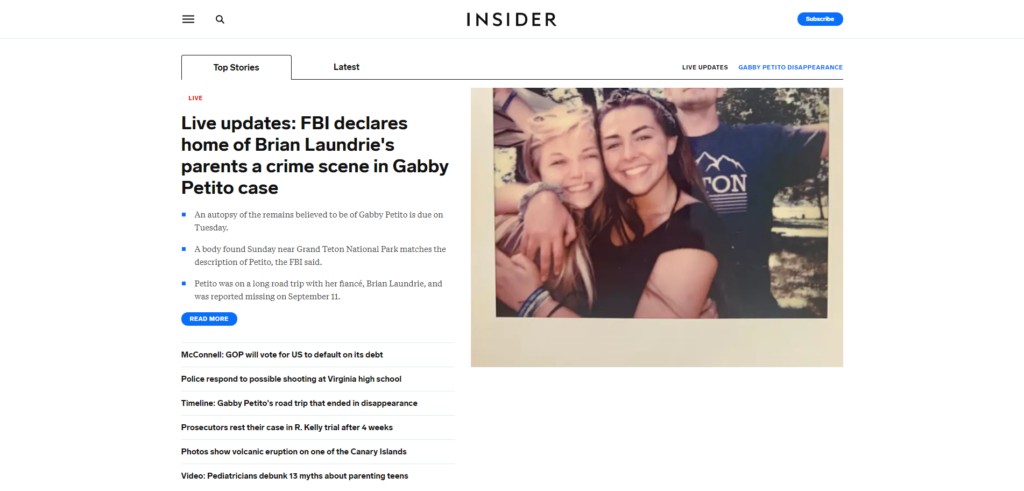
Their design is clean, uses a significant amount of white space, and focuses on conversion-oriented content (top news stories) designed to draw in readers.

Insider shifted from their classic turquoise and white color scheme to the clean white, blue, black, and grey color scheme they have today. Their content is segmented by category, free vs. premium, and sorted by interest.
Google Search Results
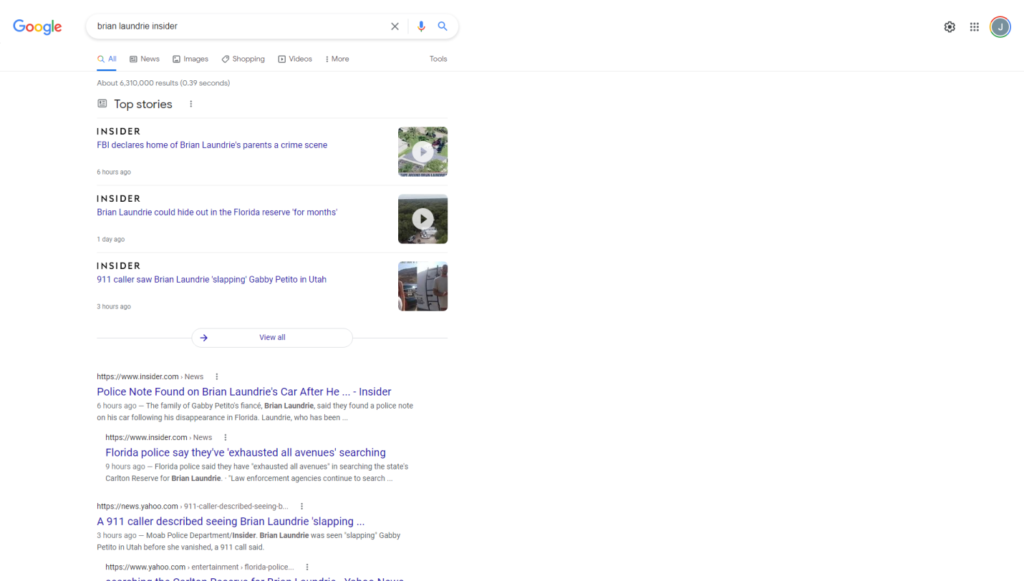
Notice that Insider approaches the same developing news story from a variety of angles. They don’t publish a few pieces in hopes that they’re picked up by Google. They publish short news stories that draw readers in, all from different angles as the story develops.
They’re well represented in search, and they’re able to use the keywords associated with specific news stories to generate traffic to their site.
Advantages
- There’s a strong balance between conversion and retention-oriented content
- Insider uses opt-in forms to build subscriber lists. These lists are then used to drive advertising revenue, affiliate content, and subscriptions
- Insider is oriented primarily around their business and finance readers. Their retention-oriented products and services are all focused on the business and finance world
- 69.81% of their traffic is driven by search
- Their proprietary Insider Intelligence platform (combined with eMarketer) is a strong value proposition for brands and advertisers
- Strong PaaS and SaaS offerings to bolster revenues
Drawbacks
- 69.81% of their traffic is driven by search; Only 10.76% of their traffic comes from social media; 0.56% comes from email
- Insider’s reliance on search means they’re vulnerable to dramatic changes in Google’s algorithms
Media Company #2: USA Today
USA Today is a daily middle-market publication owned by media conglomerate Gannett. They publish news on various topics, including news, sports, business, finance, beauty, fashion, parenting, and more.

Here’s a screenshot of their home page.

USA Today leans more towards traditional news publications. Their UI is also traditional, seeking to provide readers with trending news and special interest content in their preferred format. Their UI is optimized to include both advertising and stories, with premium content added in the mix, enticing readers to upgrade.
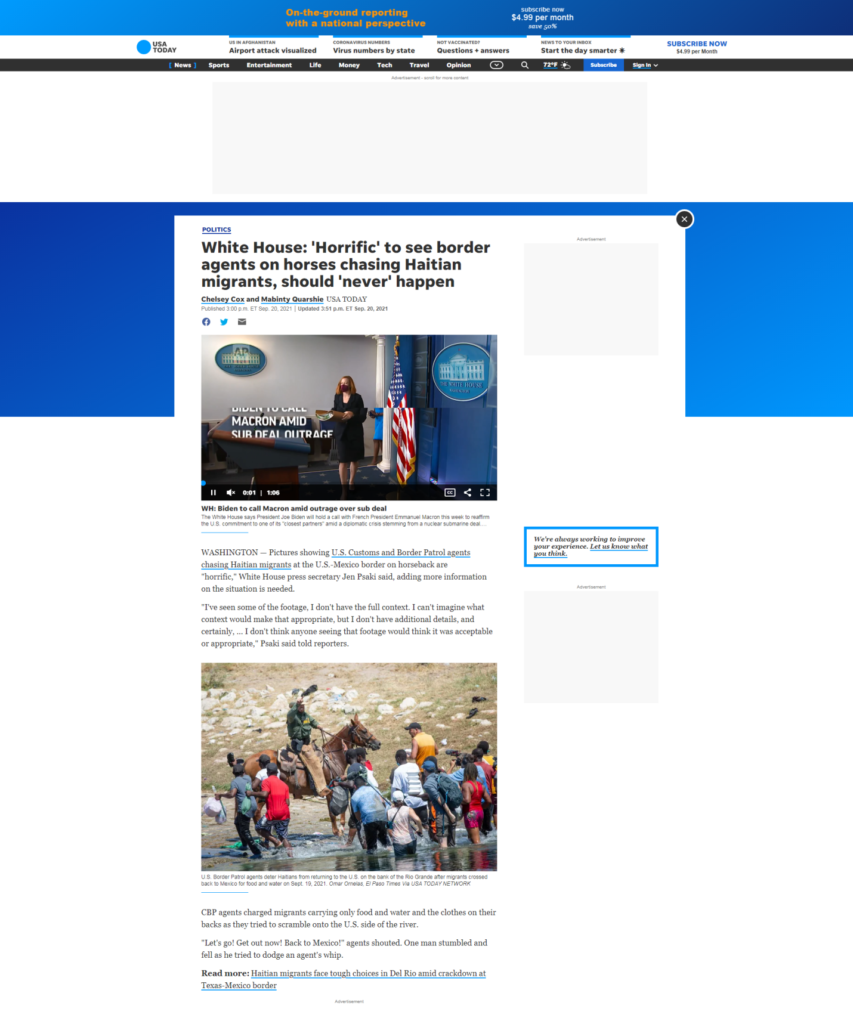
Content pages are standard fare; they include the usual elements — video, written content, advertising, related posts, and trending stories. Like Insider, USA Today covers top stories from many different angles across a variety of pages. Premium subscriber-only content includes specialty items including subscriber-only newsletters, exclusive access to newsroom conversations, crosswords, an ad-free experience, home delivery, and more.
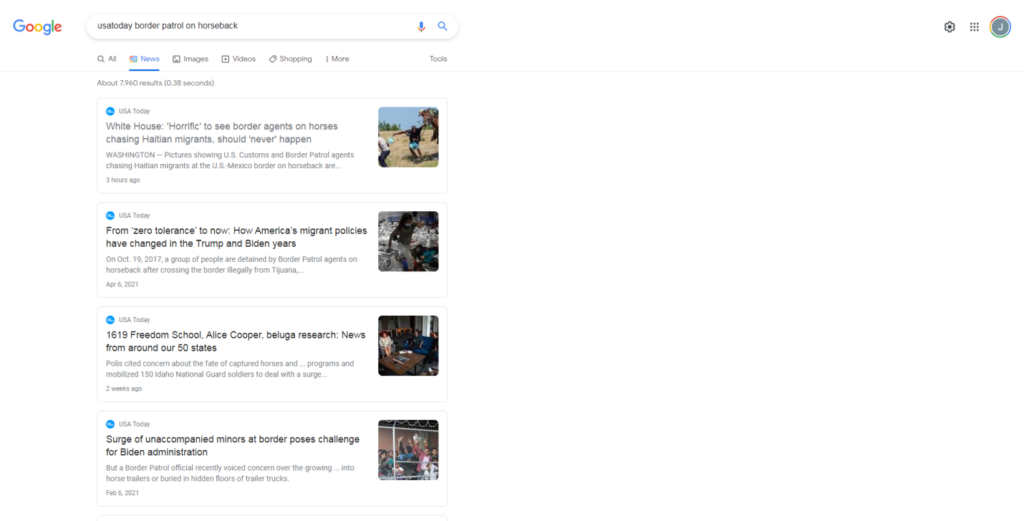
USA Today has excellent visibility in Google news and Google search, achieving visibility via layered content pieces that approach trending stories from a variety of angles. They achieve both quantity and quality, covering top stories and saturating search results, using keywords their target audience is already using.
Advantages
- USA Today has strong representation across key age groups
- The 35-44 demographic continues to outpace other demographics showing that they’ve found new ways to capture the attention of young adults, which is crucial for long-term growth
- Rapidly growing subscription revenue
Drawbacks
- USA Today struggles to keep pace with industry leaders like the Washington Post, New York Times, and Time
Media Company #3: CNET
CNET is a media website that publishes technology content (reviews, news, articles, blogs, podcasts, and videos) focusing on technology and consumer electronics. They were recently purchased by Red Ventures in 2020. Red Ventures also owns ZDNet, Game Spot, Metacritic, and Bankrate.
- More than 1 billion users visit Red Ventures properties every quarter
- CNET receives 68.37 million visits every month
- 84.9% are male
- 15.1% are female
- 72.02% of their visits come from search

CNET, like Insider, uses the same white and black color scheme, choosing to maximize whitespace and optimize content.
Did you see the steady stream of content labeled “Latest Stories“? This is the conversion-oriented content CNET uses to drive traffic from Google and Bing search results to their site. Once there, they use retention-oriented content (e.g., reviews, ratings, how-tos, and videos) to keep readers on-site.
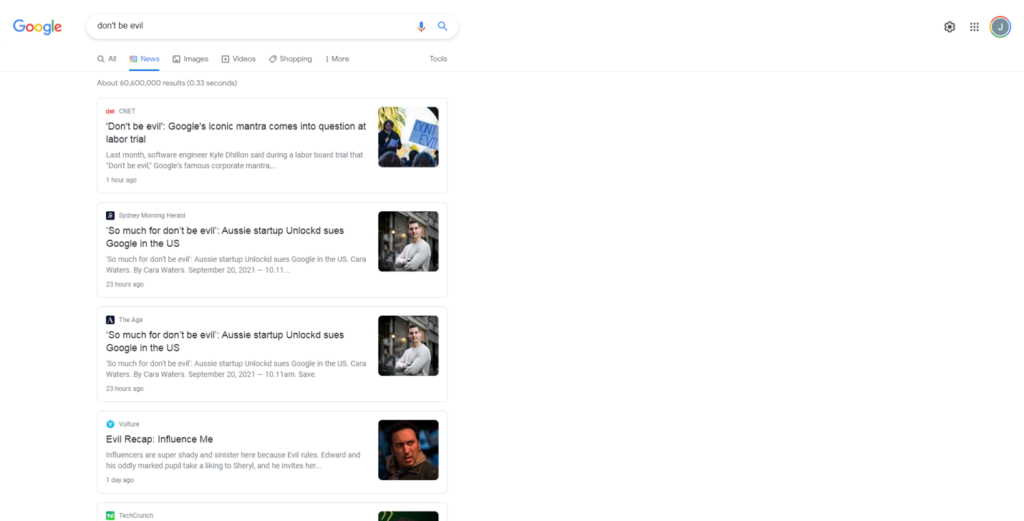
And a brief snapshot of news content overall.
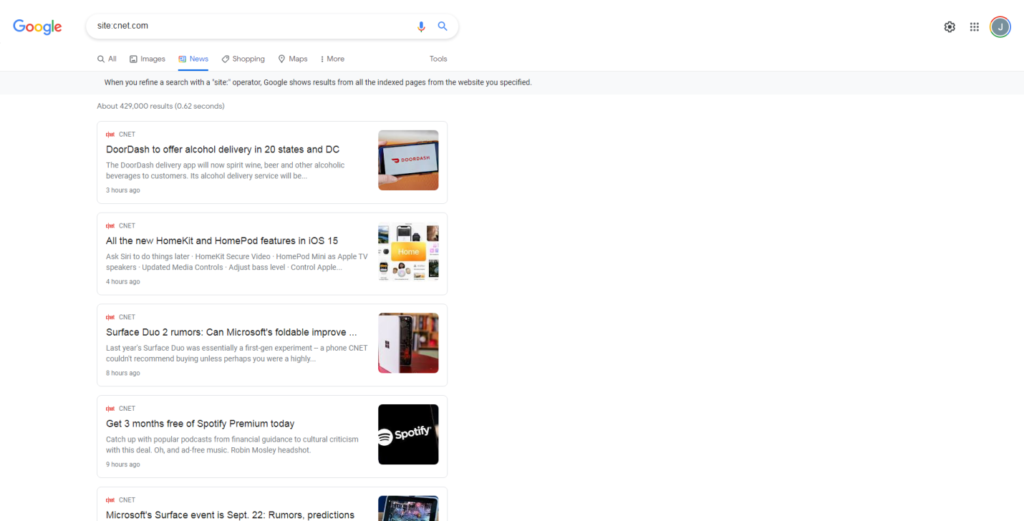
CNET is represented well in search results, but unlike Insider, their listings are oriented around a particular story or topic. They don’t seem to layer their stories in news and search results as frequently as other companies.
Advantages
- The vast majority of CNET readers are men
- CNET continues to outperform its closest competitors, including The Verge, Engadget, Gizmodo, and Wired
- CNET has a large social media following via Facebook and YouTube, in addition to their stellar site performance
- CNET has mainstream appeal
Drawbacks
- The vast majority of CNET readers are men
- Wired and Mashable have more gender balance/stability
Media Company #4: Huffington Post
Originally started by Arianna Huffington, HuffPost is a liberal media company, news aggregator, and blog. They provide news and opinion pieces covering a variety of liberal topics. The company is owned by BuzzFeed and continues to be a mainstay among left-leaning publications.
- 68.31 million visits per month
- 44% of readers have a bachelor’s or post-graduate degree
- The core HuffPost demographic is between 25 and 45 years old
- 58.98% of their visits are direct (e.g., email, syndication, partnerships, etc.)
- Only 24.30% of their traffic comes from search

The vast majority of the content on HuffPost covers liberal talking points. They know their audience well, and they focus primarily on the issues that matter to them.
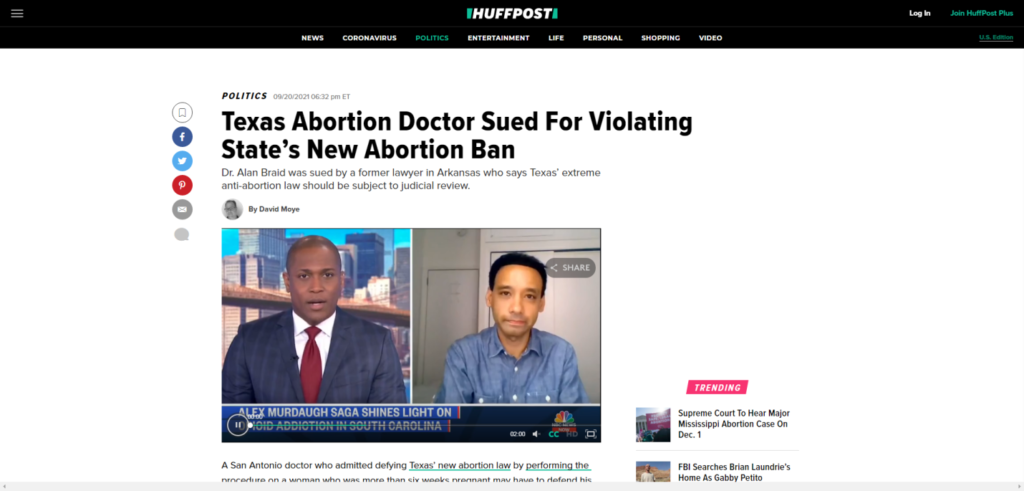
On HuffPost content pages, they typically share a mix of video and content to maximize engagement. They also prioritize social media and email sharing aggressively across the site. This may not seem like much until you contrast this with the fact that only 24.30% of their traffic comes from search.
75.7% of their traffic comes from direct, referral, social, and email sources. Does this mean they’re ignoring search?
Not at all.
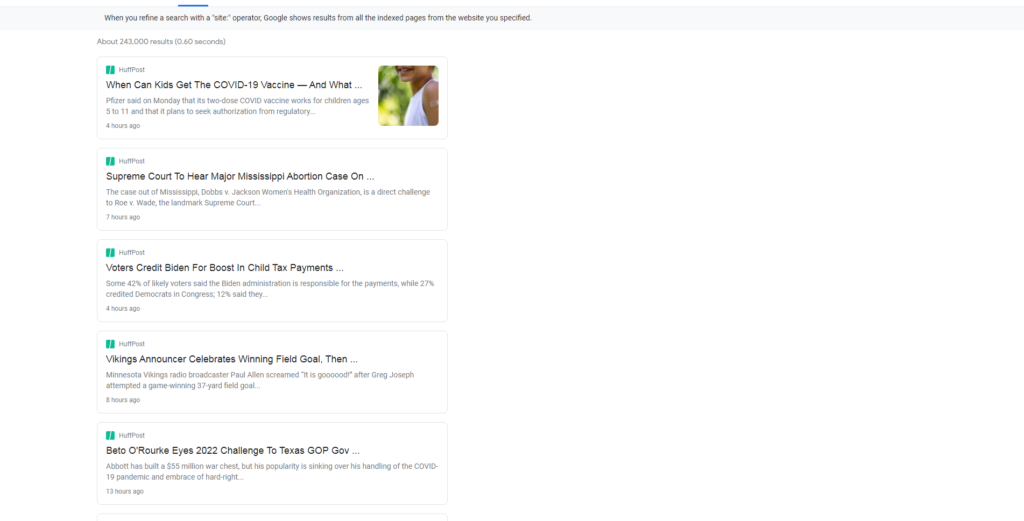
HuffPost has a steady stream of content in Google news and Google search. Their content ranks highly, especially compared to other publications like The New York Times or Washington Post.
Advantages
- HuffPost has a significant reach that they use to generate traffic
- BuzzFeed has access to multi-year partnerships that focus on content syndication and ads.
- Their content is oriented around the core values and beliefs of their audience
- 37% of readers are over the age of 45. HuffPost has an established and loyal audience of older readers
- Readers are highly engaged; 57% percent of readers go directly to HuffPost to consume content
- HuffPost used SEO to grow aggressively
Drawbacks
- HuffPost has struggled to achieve and maintain profitability
- HuffPost continues to struggle with monetization across all platforms
Media Company #5: Vice Media
Vice Media is the controversial counter-culture publisher that focuses on lifestyle, arts, culture, and news/politics. They now produce more stories than text or video in a move that’s widely viewed as a pivot.
- 18 – 34 is Vice Media’s sweet spot
- The existing audience of Vice has aged with their publication
- Vice Media’s audience leans left and prefers the counter-culture controversy that Vice courted early in its history (i.e., General Butt Naked)
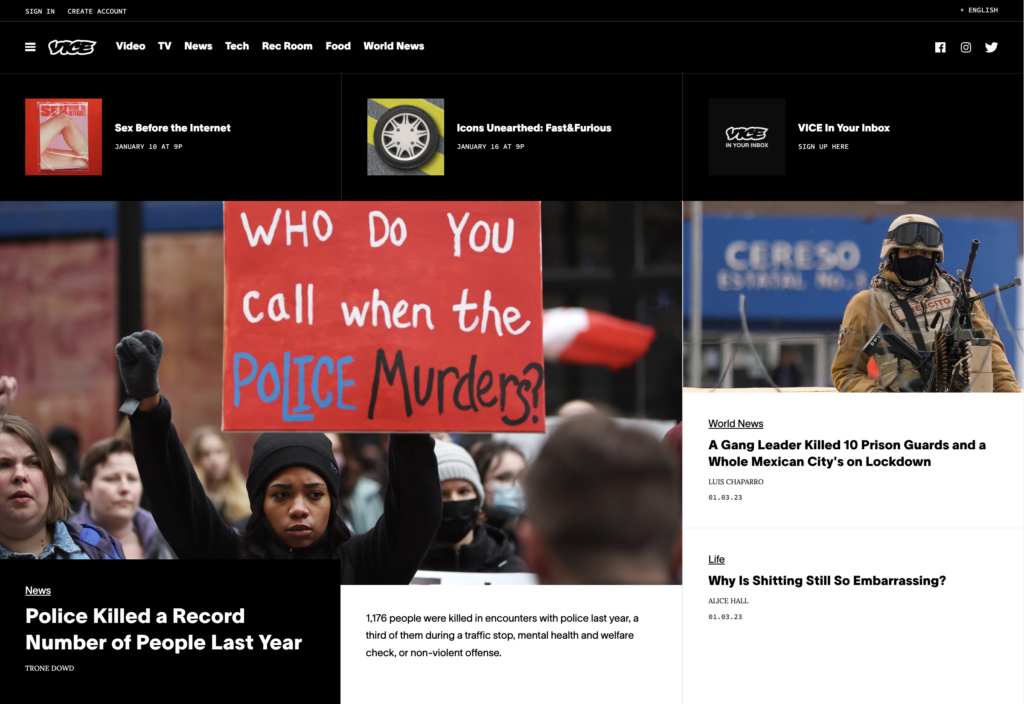
The designs for Vice brands vary depending on their emphasis or focus. Motherboard Tech by Vice focuses on technology-themed content. Munchies focuses on food, Noisey on music, Refinery29 on women, Broadly on gender and identity issues, etc. While each of the properties owned by Vice media has its own brand and design scheme, all of them emphasize Vice’s counter-culture motif.
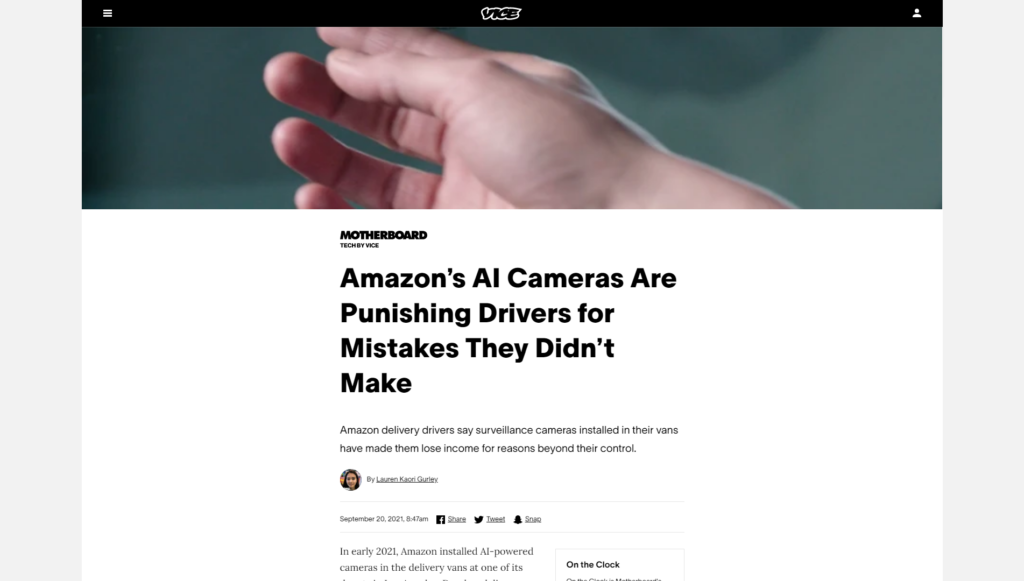
Content on Vice vs. content on Broadly.
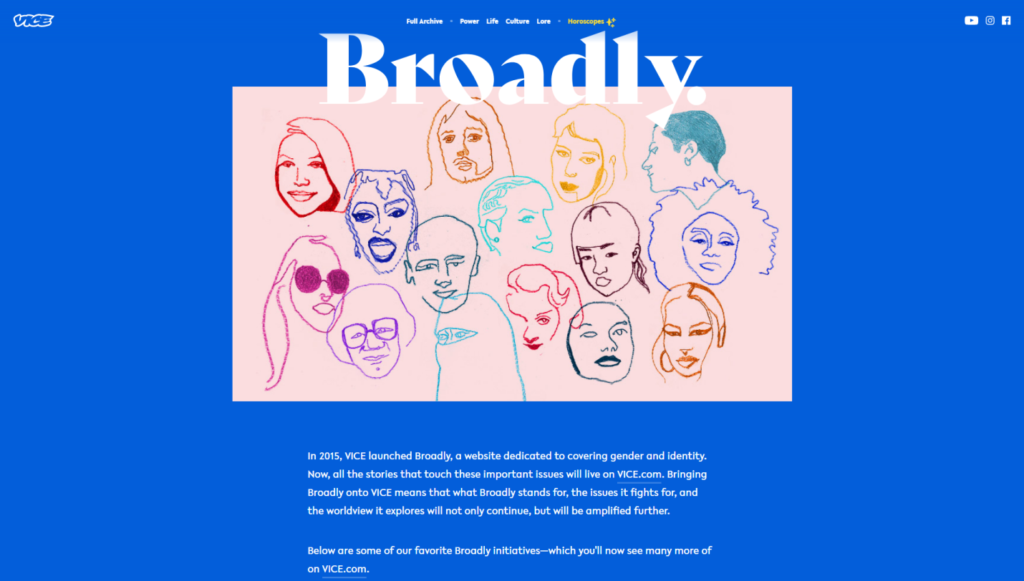
Broadly and Vice have the same counter-culture themes but relies on different design themes to drive their message.
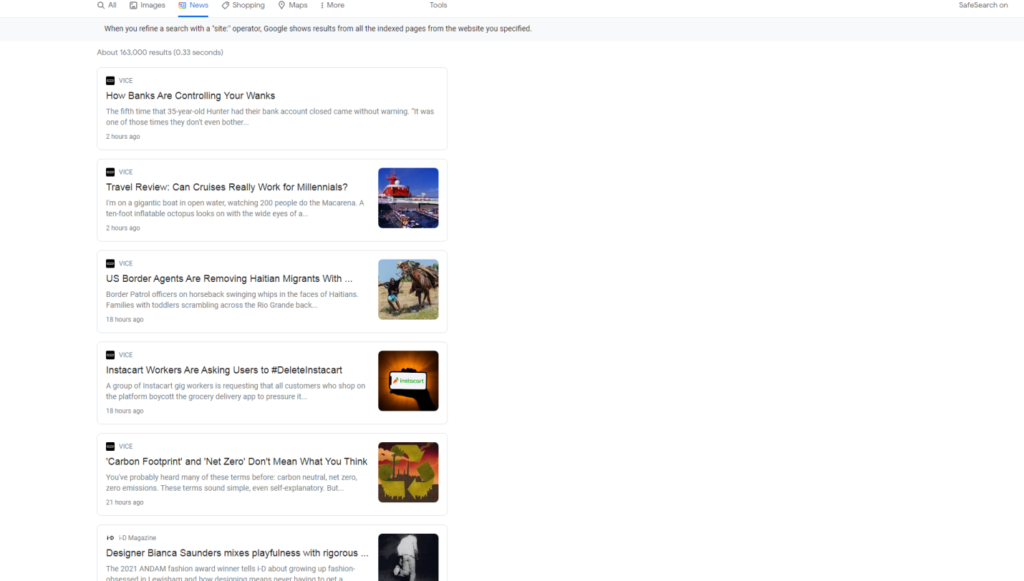
Just like every publisher in our list, Vice publishes content around the clock. Their counter-culture themes make SEO easier and more difficult at the same time. The first headline in the news listing above isn’t exactly keyword-rich, but it will attract a significant amount of attention from those who see it.
Advantages
- Vice has a long history and an established brand presence
- Their story-driven focus is beginning to produce results across their properties
- Vice has just received a $135 million cash infusion from existing investors
- Vice is focused on aggressive growth via direct-to-consumer offerings, content licensing opportunities, commercial and experiential expansion, and M&A
Drawbacks
- Vice continues to struggle with profitability and growth
- The company has been rocked by scandal and is viewed as declining
Media Company #6: New York Post
The New York Post is a conservative daily tabloid newspaper; this right-leaning publication is the oldest daily newspaper in operation. The Post also operates NYPost.com, Alexa, the luxury lifestyle supplement, the celebrity gossip site PageSix.com, and the entertainment site Decider.com; News Corp owns it.
- 54% of readers are women, 46% are men
- 497 million page views per month
- 77.7 million visitors per month
- $117,991 is the average household income
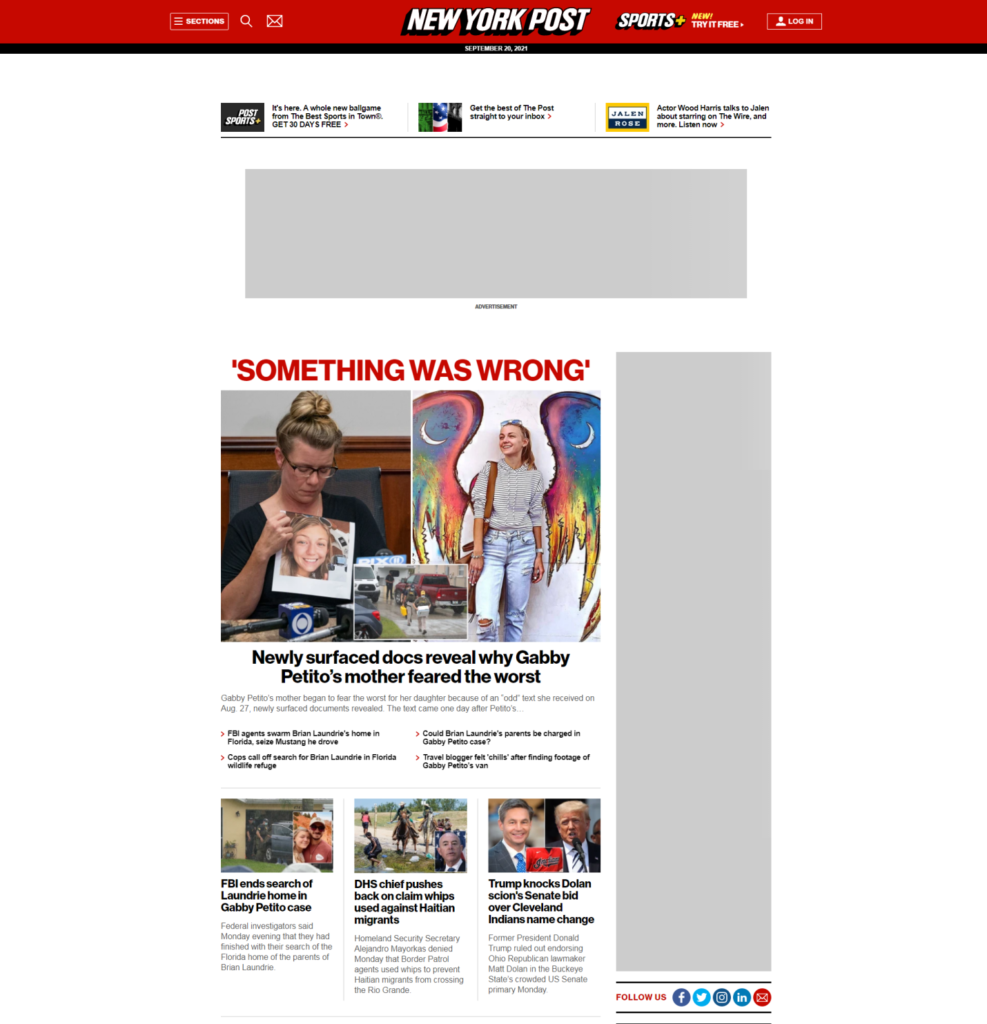
The Post’s layout is, like USA Today, a traditional one. NYPost.com layout favors IAB advertising units along with iPad app advertising opportunities.

As you’d expect, the content slants right; the content on the right sidebar leads readers to PageSix and Decider and is sorted by various factors, including trending and relevant content and product reviews.
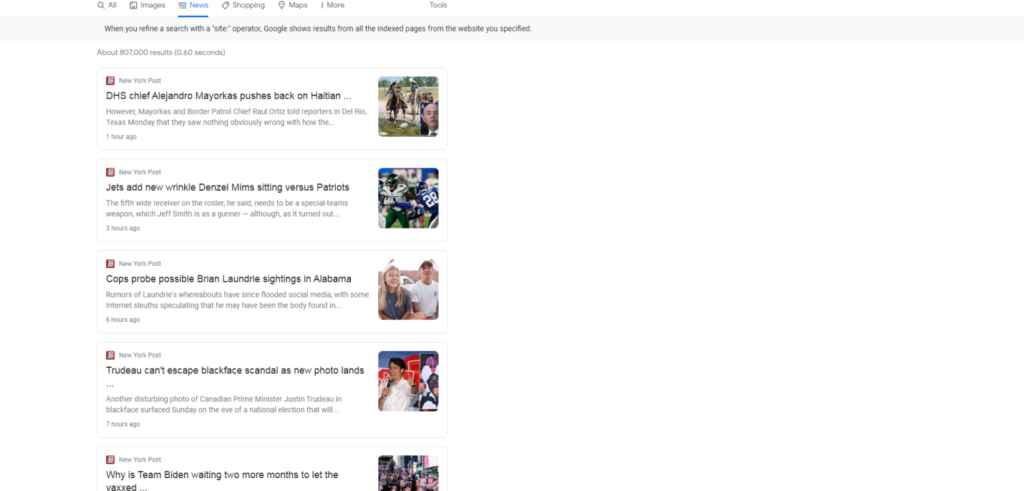
News results are fairly standard, but like HuffPost, or USA Today, the political slant is always there. Conversion-oriented content (news, top stories, etc.) is used as a driver to lead readers to retention content.
Advantages
- Has the major backing of its parent company News Corp.
- An established brand with 220 years of rich history
- Generates revenue via advertising,
Drawbacks
- It has been unprofitable since 1976
- Locked in a war of attrition with the Daily News
Media Company #7: WebMD
WebMD publishes news and information on human health and well-being. During March 2020, WebMD’s network of websites reached more unique visitors each month than any other leading private or government healthcare website, making it the ultimate health publisher in the United States, according to Comscore.
- 150.95 million visits per mo.
- 1 in 3 adults use WebMD each month
- 150.95 million visits per mo.
- 64% of visitors are women, 36% are men
- 64% are in the 18-49 age group, 59% are in the 25-54 age group
- Operates a network of sites, including Medscape, MedicineNet, OnHealth, and a list of other sites.
- The WebMD Medical Team works closely with a team of over 100 nationwide doctors and health experts across a broad range of specialty areas
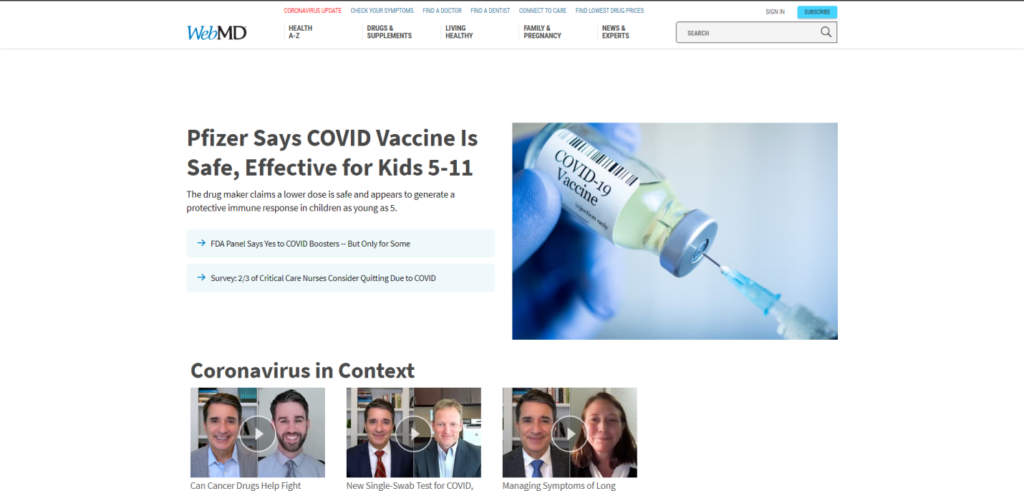
WebMD is the place we go when we want answers, or we’re looking to self-diagnose (lol). Their content is patient-driven and vetted by experts (naturally).
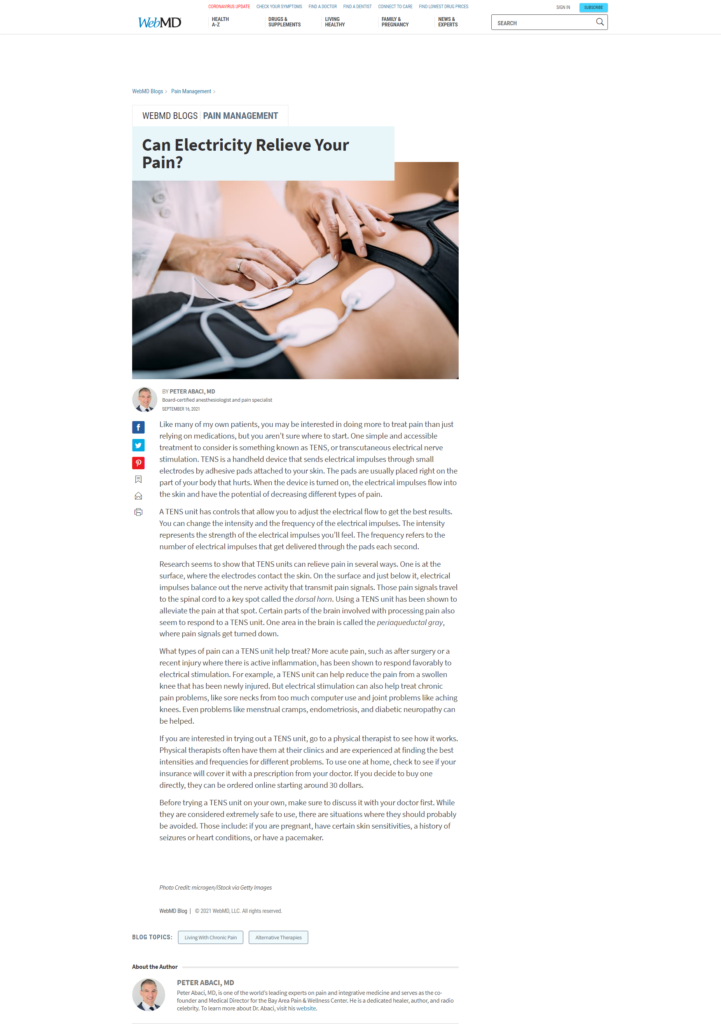
WebMD is a healthcare powerhouse. It’s a strong performer with consumers and search engines, so it’s no surprise that its content is driven by search.

WebMD covers a variety of trending health topics, as well as health-related news and content. They provide a consistent stream of trending content designed to boost traffic to their evergreen content (i.e., What is a1c?).
Advantages
- The leading health publisher in the United States
- With WebMD, patients can research any condition, drug, or treatment or get professional help directly
- Patients can browse by location or specialty, search by condition, or browse by procedure
- WebMD provides advertisers with a variety of relevant advertising options, including editorial sponsorships, programmatic ad solutions, custom content, directories, and point-of-care resources.
Drawbacks
- Many healthcare professionals view WebMD as a hypochondriac’s nightmare
- Is considered by consumers to be pro-pharma
Media Company #8: Vox Media
Vox Media bills itself as “the leading independent modern mass media company.” Vox Media owns a variety of brands, including The Verge, Vox, SB Nation, Eater, Polygon, and New York.
- Vox Media reaches 112 million people across its network of sites each month
- Vox Media has 2.3 million magazine readers
- 68 million followers across social media
- 20 million people download Vox Media podcasts each month
- Vox reaches 220 million people monthly on publisher-led concert marketplace
- Each of their brands is focused on a specific segment of the population
Vox.com
Polygon.com
The majority of Vox Media’s content leans left, and that’s reflected across their digital properties. That said, Vox Media communicates in a way that’s congruent with its audience. SBNation delivers content that’s concise, factual, and devoid of unnecessary emotion — just the way die-hard sports fans like it. Polygon focuses on important happenings in the gaming community, communicating with gamers as an insider. Vox focuses on political causes that matter to its core audience.
Advantages
- Vox Media properties are still up and coming. For example, CNET still outperforms comparable properties (i.e., The Verge). This is very good news that shows there’s still tremendous growth opportunities available
- Vox Media properties are growing rapidly
- The Vox Media network includes more than 21 different properties owned by Vox and a network of partners across the web
Drawbacks
- Vox Media is viewed as a liberal publication even though they claim to be independent and unbiased
- This bias may be detrimental if the political landscape shifts rapidly
Media Company #9: Forbes Media
Forbes is a global media company focused on entrepreneurship, business, investing, technology, finance, leadership, and more. Forbes carries prestige, but it’s also a publishing behemoth.
- 132 million monthly unique visitors (global)
- 78 million monthly unique visitors (U.S.)
- 52 million social footprint
The Forbes home page covers top stories in a variety of topics including, news, healthcare, sports, politics, etc. The home page also includes how-to posts (i.e., 6 Phrases That Make You Sound Unqualified In Job Interviews). The Forbes home page also contains editors’ picks, paid content, and events.
Content on Forbes is provided in several formats, including text, audio, or video (depending on relevance). Readers are focused primarily on content and less on Forbes’ aesthetics. Forbes understands that many of their readers consume content on the go, so it’s simplified and broken down into bite-size pieces.
Forbes relies on top stories, the same as the other publishers listed in our list. However, Forbes focuses their attention on content-oriented around its core topics (business, finance, investing, entrepreneurship, etc.).
Advantages
- An established brand with global brand recognition/recall
- A proprietary streaming platform called Forbes8, an on-demand video network with a slate of original content for entrepreneurs
- Forbes, combined with their RealClearPolitics holdings, reaches more than 27 million unique visitors each month
- Utilizes a network of Forbes contributors, a network of writers who publish content directly on Forbes.com
- Forbes.com, like the magazine, publishes a recurring list of billionaires and their net worth and is listed as a critical aspect of the website’s popularity
Drawbacks
- While Forbes’ brand appeal has remained steady or grown, their revenues have not grown in lockstep.
Media Company #10: Fatherly
Fatherly is a for-profit media company and the leading digital media brand for dads. Fatherly is a growing publication that receives 3.63 million unique visits per month.
- 3 million followers on Facebook
- 173 thousand followers on Instagram
- 11.7 thousand followers on Pinterest
- 19.8 thousand followers on Twitter
Fatherly is oriented around the child’s life stages, including — trying and expecting, baby, toddler, preschool, big kid, tweens, and teens. The content is also geared around play, gear, love and money, and health and science. It’s designed to give dads the direction they need to find the education they’re looking for to improve their relationship with their kids.
Fatherly content is a mix of trending content across various topics covered on-site (see above) and a combination of evergreen content that answers specific questions for dads (and moms).
Advantages
- Fatherly is a growing brand that’s focused on dads
- Fatherly’s niche is uncommon and not saturated with competition (yet)
- There are significant advertising opportunities for advertisers that know fathers well
Drawbacks
- Fatherly is still a small publication that’s competing with larger, more established players
Media Company #11: BuzzFeed
BuzzFeed News has breaking stories and original reporting on politics, world news, social media, viral trends, health, science, technology, entertainment, and LGBTQ issues. Their publication was initially known for online quizzes, listicles, memes, and pop culture-themed content. BuzzFeed focuses on women between the ages of 18-35 (Millennials or Gen Z)
BuzzFeed uses lots of evocative/provocative language to draw readers into its content. They make sure that their content mirrors the ethics, values, and culture of their audience. They keep the message consistent and clear; they don’t throw their women the unexpected curveball.
BuzzFeed has grown to produce thoughtful and in-depth reporting.
But they still rely on the lighthearted content that attracted the reader’s attention.
BuzzFeed’s Google news listings are completely on message. They’re focused on women’s issues and the content that matters specifically to them.
Advantages
- 3.2 billion monthly content views
- 7 out of 10 readers say their content inspires them to make a purchase
- #1 millennial publisher reach
Drawbacks
- BuzzFeed is primarily focused on women, so men are excluded from the list unless you’re focused on other properties like Tasty or HuffPost.
Media Company #12: Hollywood.com
The founders of the Syfy channel created Hollywood.com as an entertainment news website covering pop culture elements (e.g., movies, television, music, and celebrities). The site features movie trailers, interviews, and entertainment-themed news.
- Their audience is 54% men, 46% women
- The core demographic is 18 – 34
- 70% of readers are entertainment enthusiasts
- Household income of $75,000 annually
- 9 million monthly visits
- 785 million page views
- 670 million video views
- 1.6 million social media subscribers
Hollywood’s advertising is oriented around their ad specs.
The entertainment industry churns out a never-ending stream of news, content, and updates. All Hollywood.com needs to do is provide readers with the information and important details on each of these trending topics.
Advantages
- A significant number of ad formats and editorial options available to advertisers
- A smaller site that’s provides brands with entertainment-themed traffic and a significantly lower cost
Drawbacks
- A smaller site that generates less traffic
- No content studios or creative teams to create branded content
Media Company #13: IGN
IGN is the world’s #1 games and entertainment media website operated by IGN Entertainment Inc. (which is owned by Ziff Davis). IGN focuses on games, films, television, comics, and technology. They distribute content across desktop, mobile, tablet, and console platforms.
- 84% of users are entertainment enthusiasts
- 68% of users are aged 18 – 34, male skew
- 55% of users call themselves tech enthusiasts
- Average session duration of 4:08
- Reaches 220,000+ UBs per month
- Delivers approx. 3,050,000+ PIs per month
The home page is focused on trending entertainment and gaming content.
Page content includes news, reviews, trailers, events, and more. There’s a kind of reintegration that takes place in the entertainment world — “comic books, turn into games and then to movies and back again, interest and engagement grows; creating an audience like we’ve never seen before.”
IGN focuses on entertainment content and steers clear of political content unless it impacts their wheelhouse directly. While most IGN content is trending and limited in value, they also create a significant amount of evergreen content that produces long-term value. This includes reviews, forum posts, wikis, walkthroughs, and popular stories (i.e., The Top 25 Best Batman Comics and Graphic Novels). Here’s a list of advantages from IGN corporate.
Advantages
- Has 265 million fans across 34 platforms and 112 countries
- Reaches more than 288 million monthly users around the world
- Followed by more than 51MM social and YouTube followers
- An extremely engaged audience, watching over 566MM minutes of content monthly
- Publishes daily content on 34 platforms, including TikTok, Twitter, Facebook, Instagram, and Snapchat Discover
- IGN content is localized in 25 languages and 112 countries and hosted on websites and native applications on mobile, connected TV, and Xbox and PlayStation platforms
Drawbacks
- An extremely passionate and engaged audience means they’re not afraid to hold content creators or the organization accountable.
- Slight missteps can create controversy and disaster; this needs to be handled carefully
These companies know their audience inside and out
The more you know about your audience, the easier it is to retain them. Savvy publishers use both conversion and retention-oriented content to attract, convert, and retain loyal readers.
It’s an ongoing battle.
Reader expectations shift continually; they change their minds regarding the content they perceive as acceptable, sensible, or popular. This balancing act doesn’t have to be difficult; it just requires listening, consistent observation, and a willingness to test your assumptions. Make research a habit, and you’ll find you always have your finger on the pulse of your audience.
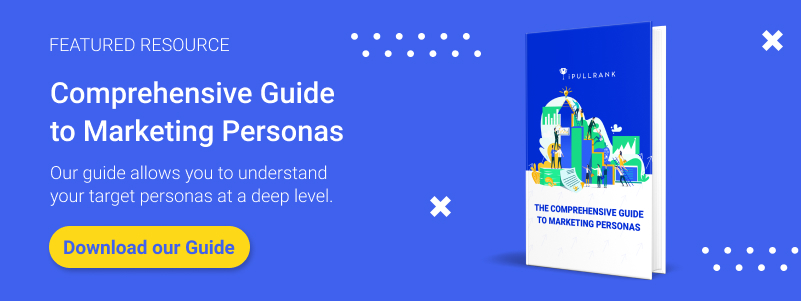
- The Cost of SEO Services in 2024 - January 4, 2024
- The 2024 SEO Guide To Successful Website Migration - April 4, 2023
- How Audience Research Shapes Financial Services Marketing - February 16, 2023





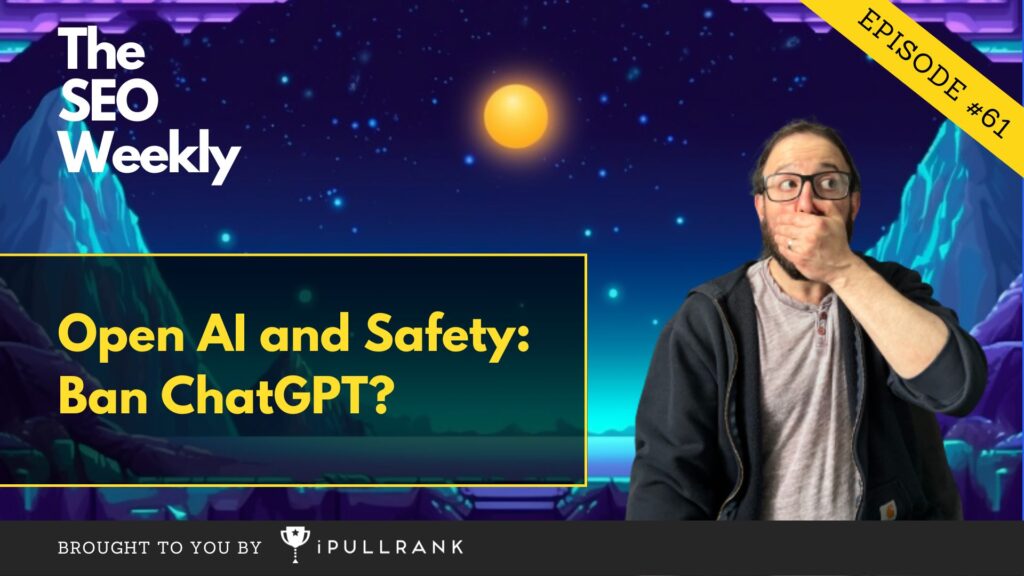
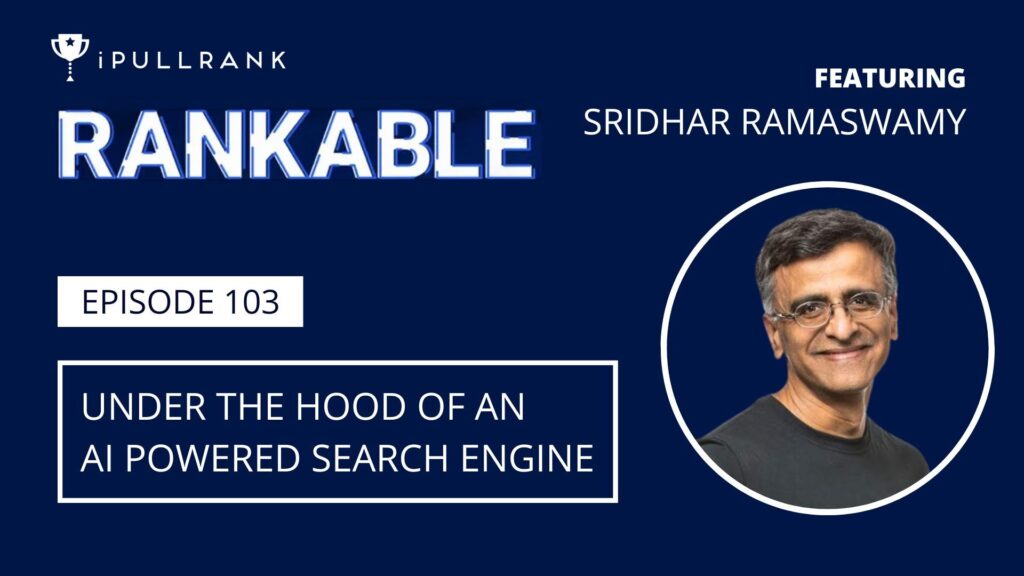




Leave a Comment